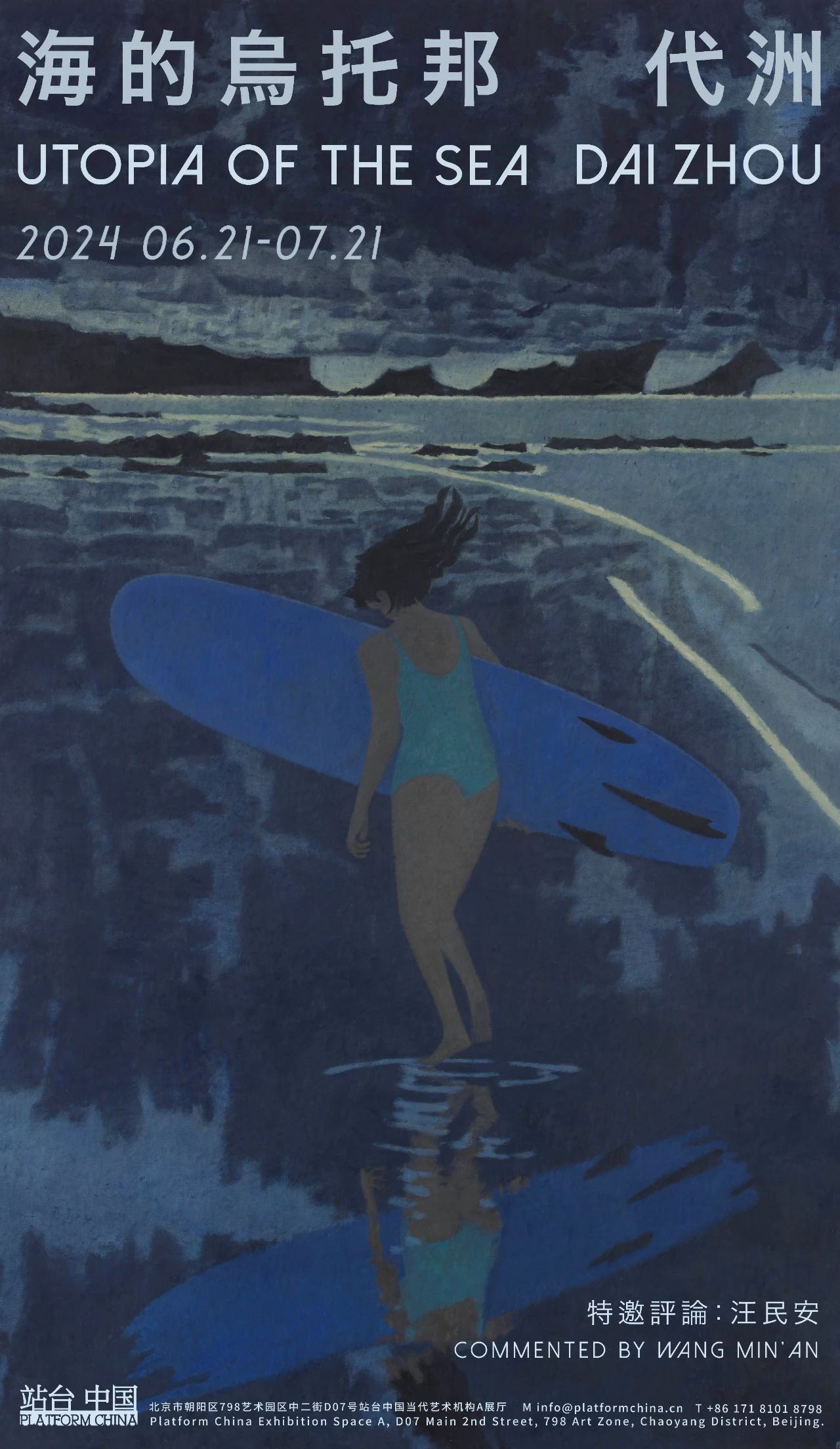展期 Period:
2024.6.21—2024.7.21
艺术家 Artist:
地点 Venue:
站台中国当代艺术机构 Platform China Contemporary Art Institute
前言 Introduction:
站台中国当代艺术机构即将于2024年6月21日呈现代洲个展《海的乌托邦》。此次展览是对代洲新阶段创作的总结与回溯,在精心挑选的作品中,包含2024年香港巴塞尔艺术展个人项目《黄金海岸》与2024年北京当代·艺术博览会个人项目《褶皱》的部分作品。本次展览特邀汪民安撰写评论,展览将持续至7月21日。
在代洲的新作中,孤独的女性形象总是显得格外突出,她仿佛被困于一个密闭的空间中:盘旋的楼梯上、栏杆前、或是画面的某个角落。她的背影默默无言,凝望着远方,心事重重,似乎在孤独中寻觅着某种解脱。然而,在某些瞬间,她与大海融为一体,摆脱了室内空间的束缚。她时而迎风眺望大海,时而慵懒地躺在海滩上沉思,时而被海水的旋涡包裹,时而与波浪嬉戏。
大海之于代洲的绘画,不仅是无边无际的自然景观,更是一片流动的非空间,让女性在其中找到自由与解放。她们在大海的怀抱中获得一种新的存在方式,一种既独立又充满联结的状态。大海成为她们心灵的伴侣,承载着她们的梦想与希望。大海与女性之间的关系不仅仅是简单的对抗和征服,而是相互生成、彼此交织。大海也不再只是自然的一部分,而是通过其自身的变化和解体来展示自身,与女性共同形成一个复杂而美丽的图景。
Platform China Contemporary Art Institute is pleased to present the solo exhibition "Utopia of the Sea" by Dai Zhou, opening on June 21, 2024. This exhibition is a retrospective and a summation of Dai Zhou's latest phase of creation, featuring carefully selected works, including pieces from her solo projects "Gold Coast" at Art Basel Hong Kong 2024 and "The Fold" at Beijing Dangdai Art Fair 2024. The exhibition will be accompanied by a critical essay written by Wang Min'an and will run until July 21, 2024.
In Dai Zhou's recent works, the image of a solitary woman stands out prominently. She appears trapped in an enclosed space: on spiraling staircases, in front of railings, or in some corner of the canvas. Her back is silent and she gazes into the distance, burdened with thoughts, seemingly seeking some form of escape from her loneliness. However, in certain moments, she merges with the sea, breaking free from the confines of the interior space. She sometimes faces the sea, gazing into the distance, sometimes reclines lazily on the beach in contemplation, sometimes is enveloped by the whirlpools of the sea, and at other times, plays with the waves.

